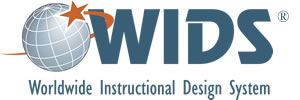- 21 Aug 2023
- 2 Minutes to read
- Print
- DarkLight
- PDF
Program Outcomes
- Updated on 21 Aug 2023
- 2 Minutes to read
- Print
- DarkLight
- PDF
Checklist |
|
Program outcomes are established at the program level. They reflect abilities learners must master by the end of a program or major.
Purpose of Program Outcomes
Program outcomes define the field specific intended results of successful completion of a program or major. They serve as performance targets for direct measures of learning.
How Program Outcomes Relate to Course Competencies
As macro outcomes, program outcomes serve as the foundation for the development of field specific competencies. Mastery of the competencies for a given program outcome should lead to mastery of that program outcome.
The competencies that relate to a given program outcome are often clustered into different courses. In other words, program outcomes go beyond and across courses and do not imply course configuration.
Linking Program Outcomes
In WIDS, you can document the relationship between a specific program outcome and its related competencies, assessment tasks, and learning plans by linking them. This is important because assessment at the course and competency level documents the learner’s progress toward mastery of the program.
Assessment at the course and competency level also provides information that guides adjustment of learning and teaching strategies to improve student success and performance along the way.
When you have linked your program outcomes to courses in WIDS, you can run a WIDS Assigned Outcome Matrix to show where program outcomes are addressed across multiple courses.
Sources for Program Outcomes
There are a number of sources that inform the development of program outcomes:
- DACUM
- External standards
- Focus groups
Program Outcome Direct Measures
Direct measures describe the nature of the assessment of a program outcome. Some examples include:
- Portfolio
- Reflection
- Completion of a course
- Standardized test
- Clinical evaluation
Program Outcome Criteria
Program outcome criteria (if used) describe standards for assessing the direct measures.
Program Outcome Samples
Accounting
- Prepare payroll and related tax reports
Dental Assistant
- Perform clinical supportive treatments
History Major
- Compare the reliability or a variety of sources of information that are used for constructing an understanding of the past
Science Major
- Communicate the results of scientific data collection and investigations

